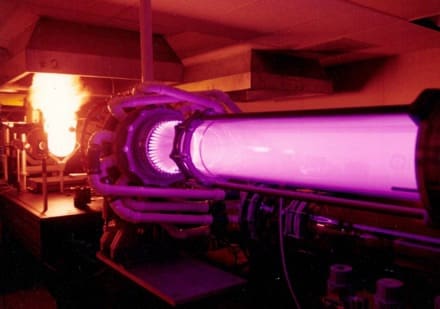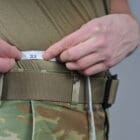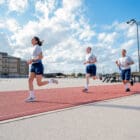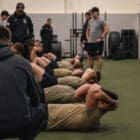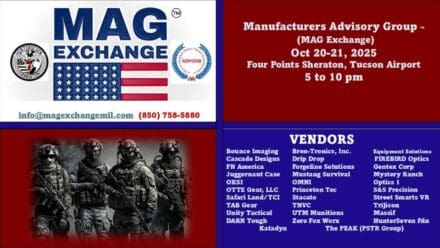JOINT BASE PEARL HARBOR-HICKAM, Hawaii – Surrounded by the dense jungle of Oahu’s mountains, members of the Iowa Air National Guard’s 132nd Security Forces Squadron embraced sweat, slope and strain during their annual training in August—pushing beyond routine drills to sharpen skills essential for battlefield readiness and leadership development.

From before sunrise ruck marches to live-fire ranges echoing with the rhythm of the M240 Bravo machine gun, each day of training held a clear intent: prepare tomorrow’s defenders to take the lead.
“The goal wasn’t just to get reps in,” said Tech. Sgt. Joshua Eaton, who oversaw portions of the squadron’s field training. “My intent going into annual training was to challenge the younger guys not just physically, but mentally. I wanted to pass down the knowledge I’ve gained to help them grow, because one day I won’t be there to guide them.”
Eaton added, “This was about showing them the way, giving them space to learn, and letting them succeed whether through failure or success.”
The 132nd Security Forces Squadron conducted its training on and around Joint Base Pearl Harbor-Hickam, including a grueling land navigation course hosted by the U.S. Army’s 25th Infantry Division near Schofield Barracks. The terrain, characterized by thick vegetation, wet clay and steep elevation changes, forced the Defenders to apply classroom concepts in real-world conditions.
“Finding points in a textbook is one thing,” said Senior Master Sgt. Andrew Phipps. “But locating them through a jungle filled with false trails and obstacles is where you find out if your team can really execute.”
The unit focused heavily on fieldcraft and proficiency in small-unit tactics; squad patrol operations; basic team leader procedures, or TLPs; and sustainment training on heavy weapons systems. The M240 Bravo machine gun, often crew-served and mounted, became a key tool for reinforcing fire team coordination under stress.
Each training lane was built upon the next. Patrol formations led to ambush drills. Route planning flowed into tactical communications. TLPs became second nature under the guidance of experienced noncommissioned officers such as Phipps and Eaton, who made it a personal mission to invest in the Airmen behind him.
When not in the field, the unit engaged in structured classroom instruction followed by hands-on application. Whether reviewing the plotted points or practicing pace counts for land navigation, each lesson was tested by noncommissioned officers.
Some mornings started with loaded rucks down humid mountain trails. Others began in the classroom and ended with bounding movements. The variability kept the Airmen focused and the purpose clear.
2nd Lt. Mike Ploeger, a 132nd Security Forces officer, was satisfied with the training during the two weeks.
“This annual training for security forces highlighted a growing emphasis on integrated base defense, infantry-style tactics and readiness for near-peer threats,” Ploeger said. “Sharpening our members’ abilities shifting with the career field toward more agile, multi-capable and strategically minded defenders.”
For the 132nd Security Forces Squadron, annual training in Hawaii became more than a requirement—it was a proving ground. That proving ground was where junior Airmen learned to read a map by terrain, not screen; where leadership meant setting the pace on the ruck march, not barking orders; and where knowledge passed down might one day save lives.
By SSgt John Johnson, Iowa Air National Guard






